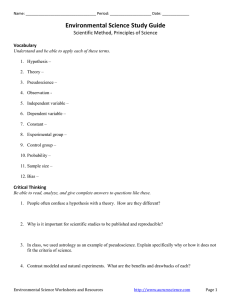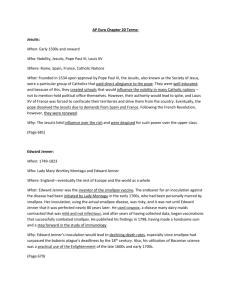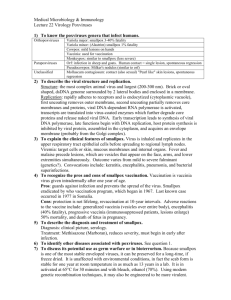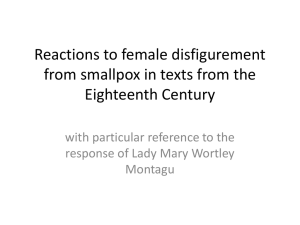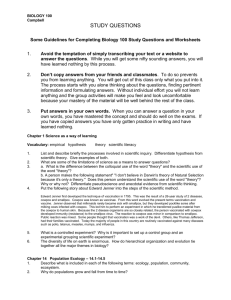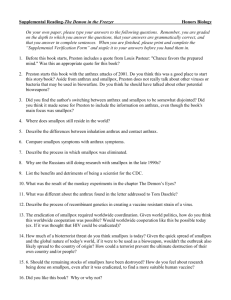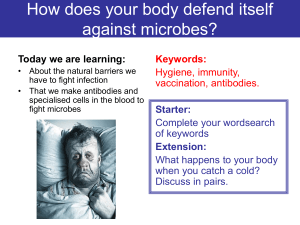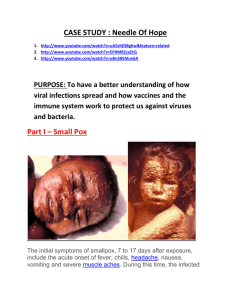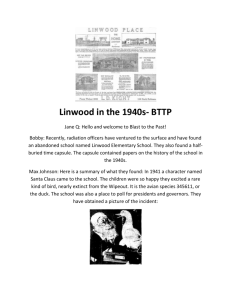Pre-AP Biology Unit 1 Homework
advertisement
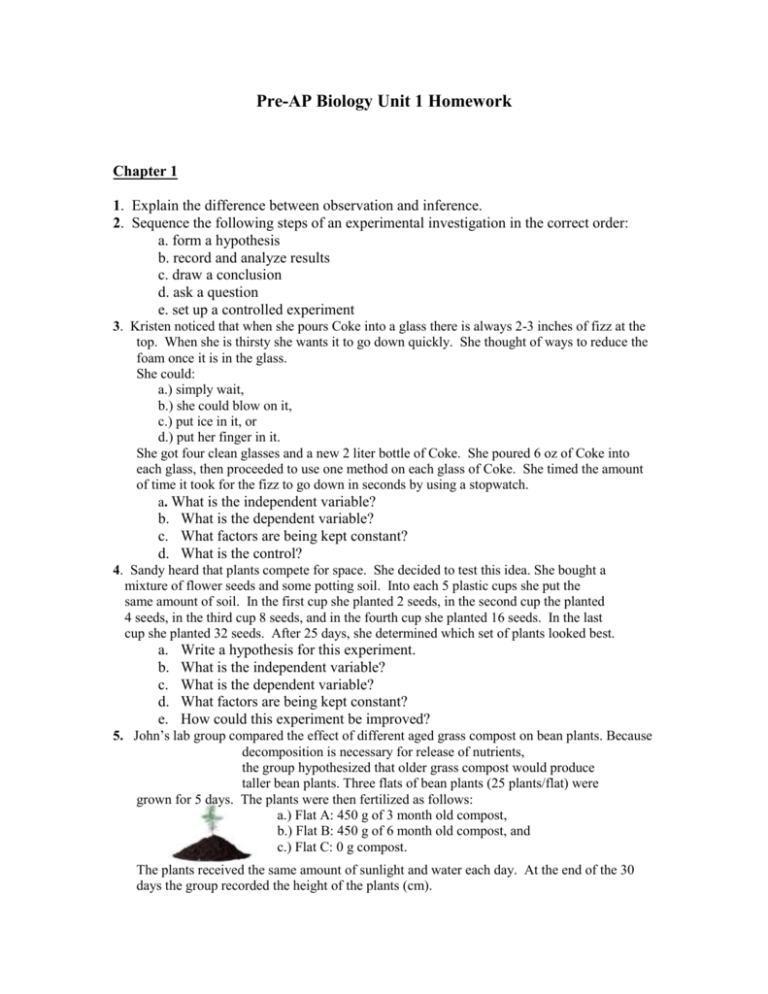
Pre-AP Biology Unit 1 Homework Chapter 1 1. Explain the difference between observation and inference. 2. Sequence the following steps of an experimental investigation in the correct order: a. form a hypothesis b. record and analyze results c. draw a conclusion d. ask a question e. set up a controlled experiment 3. Kristen noticed that when she pours Coke into a glass there is always 2-3 inches of fizz at the top. When she is thirsty she wants it to go down quickly. She thought of ways to reduce the foam once it is in the glass. She could: a.) simply wait, b.) she could blow on it, c.) put ice in it, or d.) put her finger in it. She got four clean glasses and a new 2 liter bottle of Coke. She poured 6 oz of Coke into each glass, then proceeded to use one method on each glass of Coke. She timed the amount of time it took for the fizz to go down in seconds by using a stopwatch. a. What is the independent variable? b. What is the dependent variable? c. What factors are being kept constant? d. What is the control? 4. Sandy heard that plants compete for space. She decided to test this idea. She bought a mixture of flower seeds and some potting soil. Into each 5 plastic cups she put the same amount of soil. In the first cup she planted 2 seeds, in the second cup the planted 4 seeds, in the third cup 8 seeds, and in the fourth cup she planted 16 seeds. In the last cup she planted 32 seeds. After 25 days, she determined which set of plants looked best. a. b. c. d. e. Write a hypothesis for this experiment. What is the independent variable? What is the dependent variable? What factors are being kept constant? How could this experiment be improved? 5. John’s lab group compared the effect of different aged grass compost on bean plants. Because decomposition is necessary for release of nutrients, the group hypothesized that older grass compost would produce taller bean plants. Three flats of bean plants (25 plants/flat) were grown for 5 days. The plants were then fertilized as follows: a.) Flat A: 450 g of 3 month old compost, b.) Flat B: 450 g of 6 month old compost, and c.) Flat C: 0 g compost. The plants received the same amount of sunlight and water each day. At the end of the 30 days the group recorded the height of the plants (cm). a. What is the independent variable? b. What is the dependent variable? c. What factors are being kept constant? d. What is the control? 6. Design and briefly describe an experiment to test the effectiveness of 3 brands of fertilizer on plants. Identify the manipulated and responding variables, other variables kept constant, and the control. 7. Sequence the following levels of biological organization from smallest to largest: a. biosphere e. population i. cell b. organism f. molecule j. organ system c. community g. ecosystem k. tissue d. atom h. organ 8. Describe a similarity and difference between unicellular and multicellular organisms. 9. Which is greater. 10,000 cm or 1 km? Explain your answer. 10. Answer question #30 on page 32 of your textbook. 11. Answer questions #3 & 4 on page 33 of your textbook. Read the following passage, and answer the questions that follow: Development of the Smallpox Vaccine Smallpox was once the most dangerous disease in the world. It killed more people than cholera. Smallpox was spread over a larger geographical area than the bubonic plague, and it remained incurable for longer than yellow fever. Smallpox is a virus that affected mostly children. It was transmitted through coughing, sneezing, and even touching. Victims developed such symptoms as chills, fever, and a rash. As many as 40% of smallpox victims died, and those who did not were often left blind or permanently scarred by the rash. In 1796, an English surgeon named Edward Jenner decided to test a hypothesis about smallpox. He had heard that farmers became immune to smallpox after they experienced a mild condition called cowpox. Since the farmers worked with cattle, they were often exposed to cowpox, which is spread among cattle. Jenner tested his immunity hypothesis by taking samples of pus from the cowpox rash and applying it into scratches on a healthy person’s arm. Later, he injected the same material into people’s skin. Jenner’s methods were controversial at the time, and they remained controversial for decades after he began to inoculate people. However, after the success of his project, his methods were copied in different smallpox-infected areas of the world. As more people were inoculated, the number of smallpox cases declined rapidly. In 1967, the World Health Organization (WHO) started a campaign to end smallpox all over the world. WHO teams were sent to countries where no one had ever received smallpox vaccines, and they administered a modern form of Jenner’s inoculation. In 1978, the last known case of smallpox was documented in Somalia. This led to a declaration in 1980 by WHO that the disease had been completely eradicated from the human population. Although the virus in the wild may have been eliminated, cultures of the smallpox virus were retained in laboratories. Some fear that the disease will be revived through terrorist use of such cultures of the virus. 12. Explain why Jenner’s research methods might have been controversial. Do you think his methods were justified? Why or why not? 13. Currently, smallpox does not exist in the human population. However, cultures are known to exist in guarded laboratories in the U.S. and Russia. Do you think these cultures should be kept or destroyed? Explain your answer. Chapter 2 1. Construct a Venn diagram for electrons vs. protons. 2. Write an example of when you would see water showing the following properties: polarity, cohesion, adhesion. 3. Construct a chart for the 4 biomolecules: lipids, carbohydrates, proteins and nucleic acids. Include as headings: elements, monomers, functions, and examples. 4. Answer question #28 on page 58 of your textbook. 5. Answer questions #9 and 10 on page 59 of your textbook.
